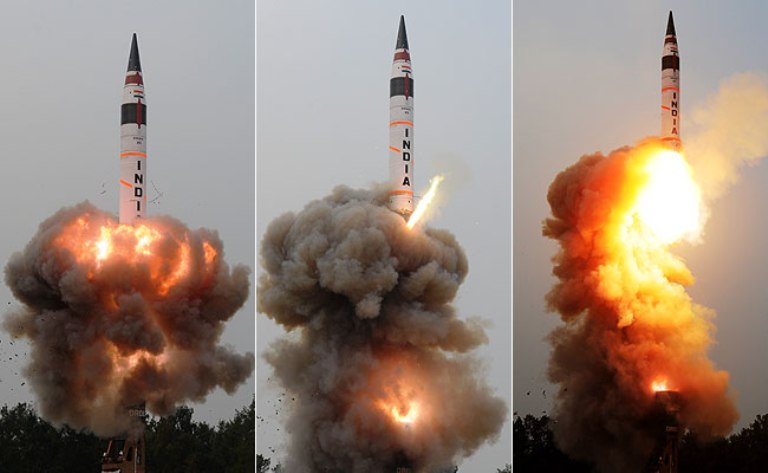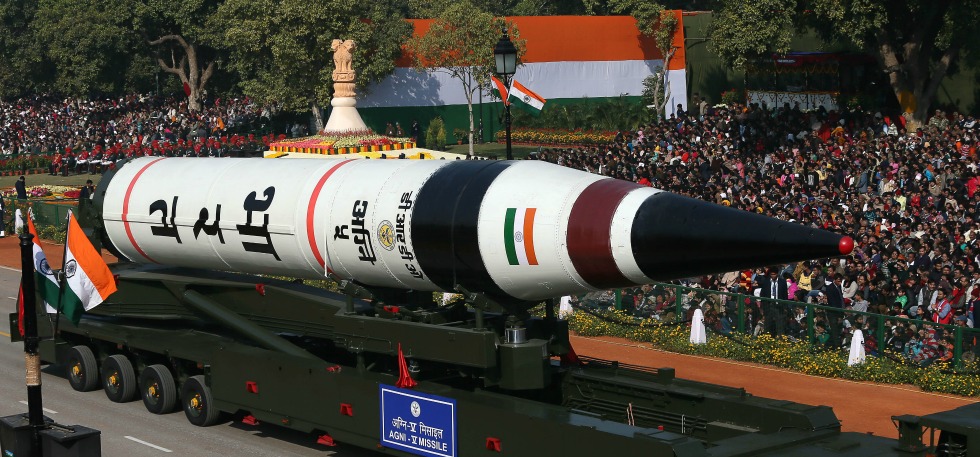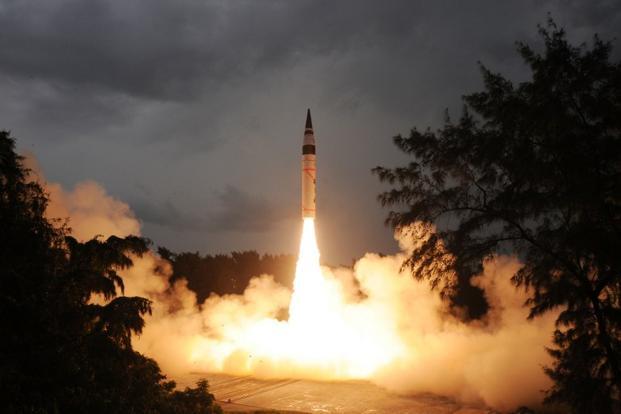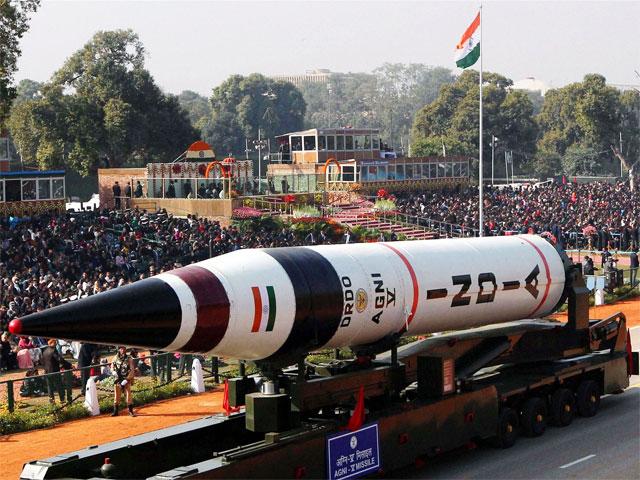Agni-V missile: India has successfully tested its nuclear-capable, intercontinental ballistic missile Agni-V on Monday, which has a range of more than 5,000 km means it is capable to reach northernmost China.
“The three-stage, solid propellant surface-to-surface missile was test-fired from a mobile launcher from launch complex-4 of the Integrated Test Range (ITR) at about 1105 hours,” said a Defence Research and Development Organisation (DRDO) official on condition of anonymity.
The missile was fired from Abdul Kalam Island off the Odisha coast.“The successful test-firing today will pave the way for user trial of the most potent Indian missile and its eventual induction into the special forces command,” the official said.
Here are the 7 interesting facts of the most formidable Missile that you must need to know:
- Reach
The most powerful Agni-V missile can reach China within 20 minutes with a strike range of over 5,000 km. The ICBM is in fact designed for prevention against China.
- Dimensions
The Agni-V missile is about 17 meters long, 2 meters wide and has a launch weight of around 50 tons. The major factor of the missile is that it can carry a nuclear warhead of more than one ton.
- Accuracy
Scientists have developed a lot of new technology indigenously which were successfully tested in the first Agni-V missile trial. The outmoded navigation systems, very high accuracy Ring laser Gyro based inertial Navigation system and the most advanced and accurate Micro Navigation system assists Missile to reach the targeted area. The high-speed on board computer and fault tolerant software along with vigorous and trustworthy bus guided the missile flawlessly, said an official.
- It has given us a chance to join the international league
After a successful test of Agni-V missile, India has joined the super exclusive club of countries with ICBMs (Missiles with a range of over 5,000 to 5,500km) alongside the US, Russia, China, France and the UK.
- Various tests
This was the fourth and final experimental test of the three-stage Agni-V missile which was completely successful- came after a gap of two years because of minor technical alteration required in the ballistic missile. The 17meter tall Agni-V missile was tested in an open configuration in April 2012 and September 2013 and the third test was conducted in January 2015
- It will be inducted into our defense arsenal
The tri-service SFC manages India’s nuclear arsenal which was established in 2003. It will have to conduct at least two user-tails before the 50-ton missile is produced in ample numbers for induction. Apart from the shorter-range missiles like Prithvi and Dhanush, the SFC has inducted the Agni-1, Agni-2, Agni-3 missiles. The focus of these missiles has been towards Pakistan, whereas Agni-4 and Agni-5 are particularly designed to prevent from China.
- India’s Agni arsenal
India today successfully test-launched indigenously developed longest range ballistic missile #AGNI5, off the Odisha coast. pic.twitter.com/wSakMpu5RM
— Prasar Bharati प्रसार भारती (@prasarbharati) December 26, 2016











